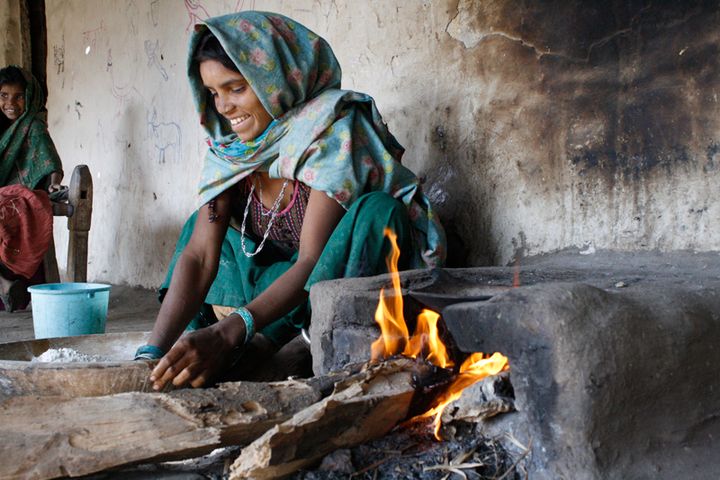Lights On Briefing: India eyes net zero goal, water talks and more
March 23: What you need to know this week

Happy Tuesday and welcome to today’s Lights On, a newsletter that brings you the key stories and exclusive intel on energy and climate change in South Asia.
In case you missed it, take a look at my Sunday interview with Christoph Nedopil Wang about efforts to decarbonise China’s Belt and Road Initiative.
If you want to have a say on what Lights On will look like throughout the rest of 2021, please fill out this short survey and leave a comment. And if you can, please support this newsletter by signing up below or becoming a member.
Net zero on the table
India may be going net zero after all - and a full decade before China. A Bloomberg scoop revealed that officials close to PM Modi are busy working out ways to meet the deadline, and even considering pushing it forward to 2047, to mark the first centenary of India’s independence. The story opens many questions - will the government really announce the new target? And if yes, is it practically - and not just technically - possible to meet such a target? I am going to hear what experts have to say later this week.
Is the end of plastic near?
The Modi administration seems to be finally walking the talk on plastic pollution. After the PM's big statements and the launch in October 2019 of a plastic collection drive in lieu of an actual policy, the environment ministry on Friday unveiled a new draft for the ban of various types of single-use plastics.
The ban will phase out a number of plastic categories from now to 2022, starting with plastic bags from September. In phase two, which will come into effect from January next year, plastic flags, ice cream sticks, plastic ornaments and more will be banned. The third phase, from July 1, will do away with single use plastic plates and cutlery, wrapping film around cigarettes and sweets, among other items.
Mapping the Himalayas from a height
India has set out to assess the health of its most remote glaciers through airborne laser surveys. A pilot study conducted in the remote Spiti basin of the northern state of Himachal Pradesh will estimate the thickness of the local glaciers, and will be followed by similar surveys in the Indus, Ganga and Brahmaputra sub-basins.
India takes its melting glaciers very seriously as not only do they provide livelihoods to more than 500 million people living downstream, but they are also key for the country’s energy security: Almost 33 percent of the country’s thermal electricity and 52 percent of its hydropower are dependent on water from rivers originating in the Himalayas.
Shifting oil markets
India is the world’s third biggest oil importer, and now its refiners are considering moving away from the Middle East for their oil needs, looking at the US instead. After squabbles over high petrol prices at home, for which Indian lawmakers have blamed Saudi Arabia’s supply restrictions, US crude has become more attractive, according to officials at state-owned refineries.
A boost for renewable investment
The green energy branch of the Indian conglomerate Adani Group has sealed a $1.35 billion debt package with 12 international banks to finance its renewable energy portfolio, one of the largest financing projects of its kind in Asia.
The scheme will support the company’s efforts towards building 25GW of renewable capacity by 2025, starting with a 1.69 GW hybrid portfolio of solar and wind renewable projects to be built in the desert state of Rajasthan.
Bangladesh
Breaking the water deadlock
India and Bangladesh, which share 54 common rivers, have agreed to strengthen cooperation on water issues, including a framework for river water sharing, water pollution control, river bank protection, flood management and more. In a meeting, country representatives agreed to set up a working group to devise practical solutions to the water problem. If the two countries follow through with the plan, this would signal an important shift from their historically difficult relations when it comes to the management of shared waters, particularly around rivers such as the Teesta and Ganga.
Pakistan
Nuclear development
Pakistan’s first Chinese sponsored nuclear power plant is now connected to the national grid. The plant, built in Karachi, has a capacity of 1.1GW and is expected to help boost the country’s struggling energy sector and the economy at large.
The plant had achieved criticality, in which each fission releases a sufficient number of neutrons to sustain an ongoing series of nuclear reactions, back in February, but had to undergo a series of safety procedures before being connected to the grid.
Indus basin
Talks resume
A delegation from India and Pakistan will meet this week in Delhi to discuss matters of shared waters falling under the Indus Water Treaty - an issue fraught with complexities and political tensions. The last meeting of the bilateral commission was held in Lahore, in Pakistan, in 2018. The long hiatus, according to officials, was due to the pandemic but also to the decision of the Indian government to revoke Kashmir’s special status, increasing pressure on its disputed borders. According to the meeting’s agenda the Pakistani delegation will discuss the design of the 1,000MW Pakal Dul and 48MW Lower Kalnai hydroelectric plants, the supply of information and data of India’s new projects on western rivers, flood data arrangements and more.
On Twitter this week
I reflect in our blog #Environmentality on the lapse of the ordinance creating the commission for air quality management in NCR. The commission's tenure seems to have ended as abruptly as it began. While the ordinance had many limitations, this IS a significant blow. THREAD https://t.co/EBUo9jAsUCMarch 18, 2021
Research and further readings:
- Long read: Crisis in the Himalayas: climate change and unsustainable development - The Uttarakhand disaster last month has brought into focus what locals and scientists say is a crisis unfolding in the Himalayas, the world’s tallest mountain range. They say an explosive cocktail of climate change and aggressive road and dam building in the geologically unstable range threatens not just local villages but the people, economies and security of the eight countries in the greater Hindu Kush Himalayan region.
- Opinion: Climate change: How infrastructure can weather the storm - Climate change is causing infrastructure to operate outside the threshold for which they were originally designed, inviting the risk of collapse. With an array of new projects in the pipeline as part of its Covid recovery plan, the government now has the unique chance to incorporate climate change preparedness in tomorrow’s cities and infrastructure.
- Long read: Central Asia’s solar awakening - A rare look at the energy transition in one of the underreported corners of Asia. Uzbekistan is providing a model for solar development in Central Asia as it rolls out its first large-scale projects and prioritises electrification as a tool for development.
That’s all for today! If you like what you read, please consider signing up for free or as a member:



